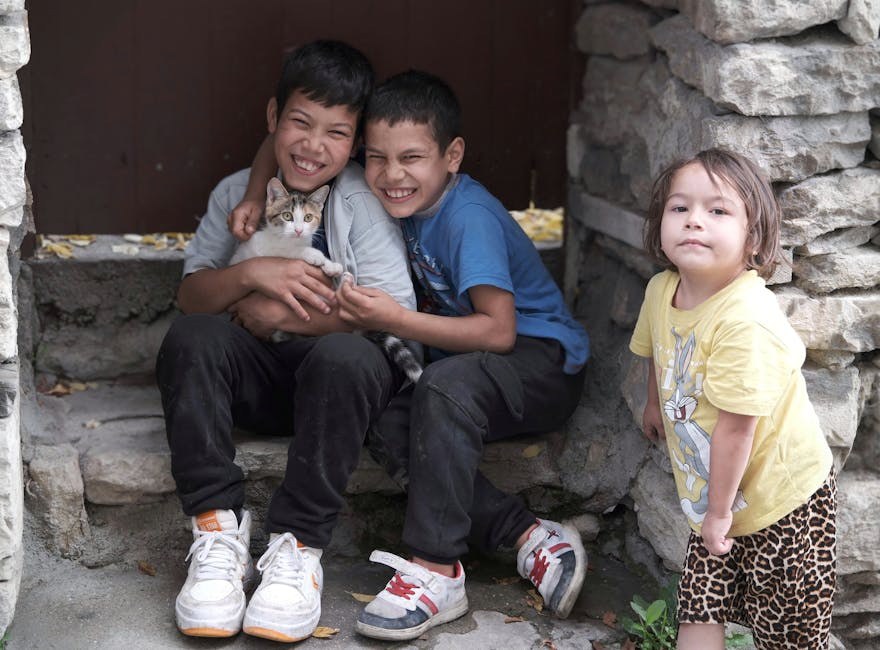Dating sits on a broad spectrum – from no-strings meetups to fully committed partnerships. Somewhere in the middle lives the casual relationship, a setup that can feel simple on the surface yet slippery in practice. If you’ve ever wondered what a casual relationship means to a guy, you’re not alone. The answer isn’t identical for every man, but there are reliable patterns you can use to orient yourself, protect your feelings, and decide whether this arrangement suits what you truly want.
What a casual relationship often signals to men
For many men, a casual relationship describes time spent with someone they like without the weight of long-term promises. It’s connection without a contract – companionship, intimacy, and shared experiences without marching toward a defined future. Some men treat a casual relationship as a friendly bond with perks; others see it as early-stage dating that may or may not deepen. The key is that expectations are intentionally lighter, and labels are deliberately softer.
That doesn’t mean there are no feelings. It means those feelings aren’t being converted into plans – meeting the parents, merging calendars, or mapping out holidays. In a casual relationship, the bond is real, but the trajectory is flexible.

Start with your own compass
Before decoding anyone else, clarify yourself. Ask: What do I want right now – adventure, companionship, growth, healing, or commitment? If your answer is stability and shared long-term goals, a casual relationship will likely rub against your needs. If your answer is connection without future promises, a casual relationship could serve you – provided communication is honest and boundaries stay intact. The worst outcome is hoping a casual relationship “turns serious” while ignoring clear signals to the contrary.
How the arrangement looks day to day
Surface behavior tells you a lot. In a casual relationship, plans are made with less advance notice; texts are warm but not constant; weekends may be shared, but there’s freedom to pursue solo plans. Affection shows up in the present tense – “I like being with you tonight” – instead of future language – “We should book that trip next spring.”
- Time together is enjoyable yet flexible – rescheduling happens, and it isn’t a crisis.
- Affection is genuine, but public labels are fuzzy – “seeing each other,” “hanging out,” or simply names without titles.
- Emotional check-ins occur, but not with the depth or frequency of a defined partnership.
- Sex is common, though not mandatory; consent, safety, and respect still apply – always.
None of this is automatically good or bad. The question is whether these rhythms match your values. A casual relationship that aligns with your needs can feel freeing; one that conflicts with them can feel like slow-motion heartache.

Exclusivity, labels, and the space between
A casual relationship may be exclusive or open – exclusivity isn’t guaranteed just because feelings are involved. Some couples choose a casual relationship that is monogamous while they take things slowly; others keep dating separately. What matters is explicit conversation. If something is unsaid, assumptions will multiply, and assumptions are where most hurt begins.
Because a casual relationship avoids firm labels, partners sometimes reach different conclusions about what’s “implied.” One person might assume that spending three nights a week together equals exclusivity; the other might see it as chemistry plus convenience. Clarity protects both hearts.
Why some men prefer this dynamic
Motivations vary, but common reasons recur. A casual relationship can feel attractive to a man who wants closeness without the pressure of timelines. Consider these themes – none of them villainize anyone; they simply describe different readiness levels.

- Recovery after a breakup – he values connection but isn’t ready to architect a new future.
- Career or life transitions – demanding projects, relocations, or studies make a lighter bond easier to carry.
- Temperament – some people prefer independence and keep partnerships unstructured.
- Uncertainty – he enjoys you but doesn’t know whether long-term compatibility exists.
- Philosophy – he simply prefers a casual relationship and is honest about it.
None of these reasons are wrong. They become problematic only when they are hidden, downplayed, or contradicted by behavior that hints at promises never spoken aloud.
Common misreads that lead to hurt
Confusion often grows in the gaps between words and actions. In a casual relationship, warmth can feel intimate enough to suggest a future, especially when chemistry is strong. A few patterns to watch:
- Projecting hope – assuming a casual relationship is the “first phase” of something serious when the other person has stated otherwise.
- Reading frequency as commitment – more time together can simply mean enjoyment, not intention.
- Upgrading the label in your head – calling it a relationship privately while publicly accepting ambiguity.
- Discounting direct statements – if someone says they don’t want commitment, believe them the first time.
When your heart wants more and the structure stays casual, pain follows. The remedy is not strategy; it’s alignment. If a casual relationship no longer fits, the answer is an honest exit – not waiting for a plot twist.
When a casual setup is healthy
Plenty of people thrive in a casual relationship that is transparent and respectful. It can offer companionship without pressure, sexual fulfillment with clear consent, and social enjoyment while both partners focus on personal goals. It can also serve as a gentle on-ramp after a difficult breakup – a place to practice closeness again without overpromising.
What matters is shared understanding. Two people who both want a casual relationship can enjoy each other deeply when boundaries are clear, safer-sex practices are honored, and neither person is secretly bargaining for transformation. In that harmony, a casual relationship feels light, not lonely – connected, not confined.
Conversations that keep everyone on the same page
Direct talk might feel awkward, but it prevents months of misinterpretation. You don’t need a script – aim for clarity and kindness. Here are conversation moves that keep a casual relationship healthy:
- State your current aim – “I’m enjoying this and want to keep it easy. I’m not making long-term plans right now.”
- Ask for their aim – “How does this feel to you? Are you also looking for a casual relationship?”
- Define exclusivity – “Are we seeing other people? If so, how do we handle honesty and safety?”
- Set check-in points – “Let’s revisit how this feels next month so neither of us drifts into assumptions.”
- Protect boundaries – “Sleepovers are great, and I still need one or two solo nights a week to recharge.”
These talks aren’t ultimatums – they’re maintenance. A casual relationship doesn’t run on autopilot; it runs on respectful updates.
Reading actions – because consistency matters
Words count, and so do patterns. In a casual relationship, consistency is the compass. If he says he wants to keep things open and his behavior aligns – warm presence, flexible scheduling, little future talk – you’re seeing clarity. If he talks in future tense yet dodges simple commitments, the mismatch will sting later. Let alignment guide your decisions.
Shifting from casual to committed – or choosing an exit
Sometimes people start in a casual relationship and later realize they want more with each other. That shift, when it happens, tends to feel organic – you both start planning ahead, introducing one another to friends and family, and choosing exclusivity without pressure. The label catches up to the life you’re already living.
If the desire for change is one-sided, honor the truth. Share your feelings plainly: “I’m starting to want a defined relationship. If that isn’t where you’re headed, I care about you – and I need to stop this.” A casual relationship is supposed to protect freedom; that freedom includes the freedom to walk away.
Boundaries that make the difference
Healthy boundaries aren’t fences; they’re signposts. They tell you where care can flourish. Consider the following in any casual relationship:
- Emotional availability – you can be kind without becoming someone’s secret therapist. Share, but don’t overfunction.
- Time protection – keep your hobbies, friendships, and rest days intact. A casual relationship should complement, not replace, your life.
- Privacy and disclosure – decide what you share on social media and what remains between you two.
- Sexual health – discuss testing, contraception, and exclusivity with candor. Safety isn’t negotiable.
- Exit terms – agree that either person can end the casual relationship respectfully, without drama or blame.
Red flags to notice early
Ambiguity shouldn’t hide disrespect. A casual relationship is still a relationship – it deserves integrity. Watch for:
- Inconsistent communication that leaves you anxious for days at a time.
- Disappearing acts between meetups, followed by intense affection – a roller coaster that keeps you off balance.
- Dismissive attitudes toward your boundaries or safety requests.
- Secretiveness that exceeds reasonable privacy – hiding you completely or lying about basics.
- Promises made in the moment then forgotten – apology cycles without change.
If any of these appear, reassess. A casual relationship trades structural commitment for freedom, not for neglect.
Green lights that point to respect
By contrast, there are healthy markers in a casual relationship:
- Clear statements about intentions – no mixed messages.
- Reliable follow-through on plans – flexibility without flakiness.
- Emotional warmth that doesn’t overpromise – affection paired with honesty.
- Openness about exclusivity and safer-sex choices – adult conversations, not evasions.
- Graceful endings when needed – ending a casual relationship with care shows character.
Handling feelings as they evolve
Feelings rarely stay still. In a casual relationship, you might feel steady for weeks and then suddenly care more. Treat that shift as normal rather than a problem. Name it, share it, and let the truth guide the next step. If the other person can’t meet you there, your honesty protects your future. Ending a casual relationship because your heart wants more isn’t failure – it’s loyalty to yourself.
What “not complicated” really means
People sometimes say men aren’t complicated – but all humans are nuanced. The point isn’t to reduce anyone; it’s to resist overcomplicating what’s stated plainly. If a man says he wants a casual relationship, believe the words and watch the follow-through. If the conduct matches the claim, decide whether that structure nourishes you. If it doesn’t, no amount of waiting will convert it. A casual relationship is either a fit for this season or it isn’t.
Making peace with the choice you make
Whether you stay or go, choose actively. If you opt into a casual relationship, do it with eyes open – enjoy the laughter, the chemistry, and the ease, and keep your self-care strong. If you step away, do it with kindness – thank the connection for what it gave and make room for the kind of bond that matches your hopes. Either path is dignified. The power lies in choosing the structure that honors your present self.
In short, a casual relationship often means he values your company without committing to a defined future. That can be refreshing when you want the same thing – and painful when you don’t. Use your own compass, communicate often, and let alignment – not fantasy – determine your next move.